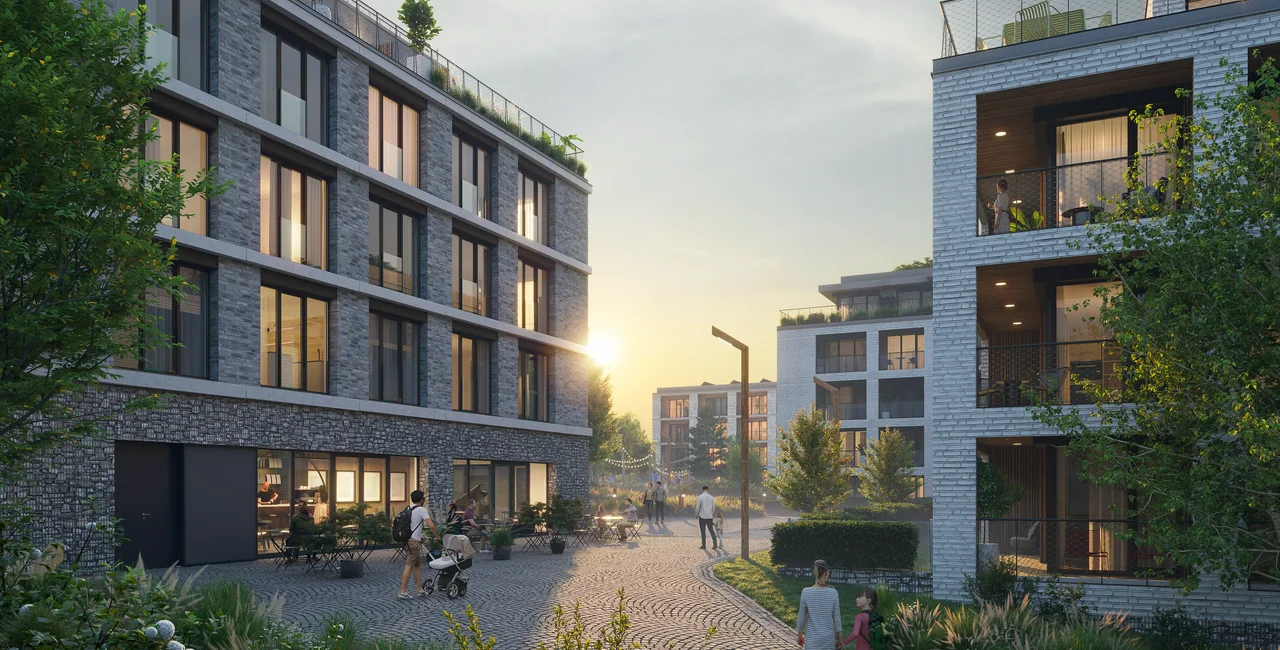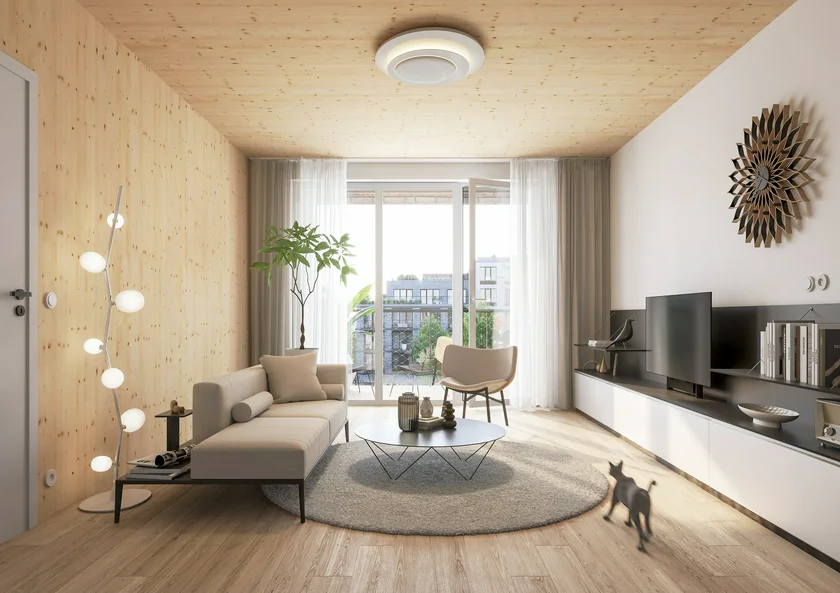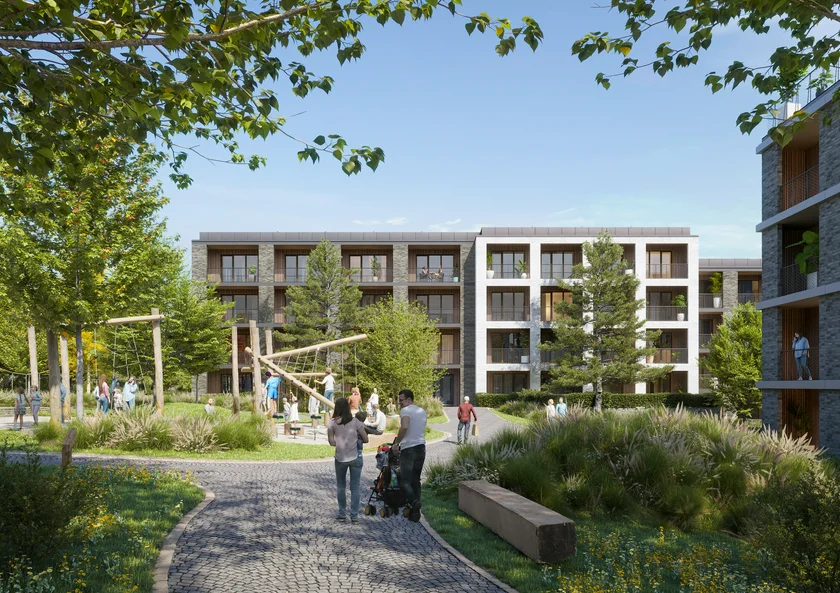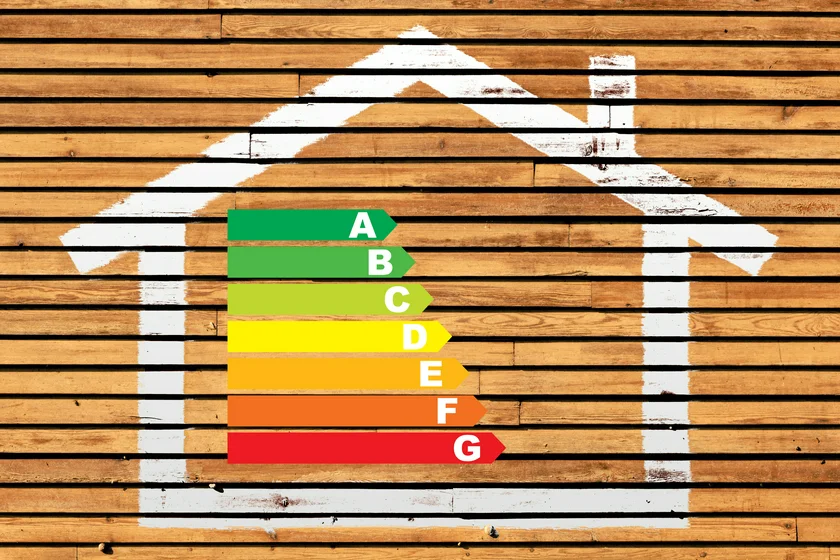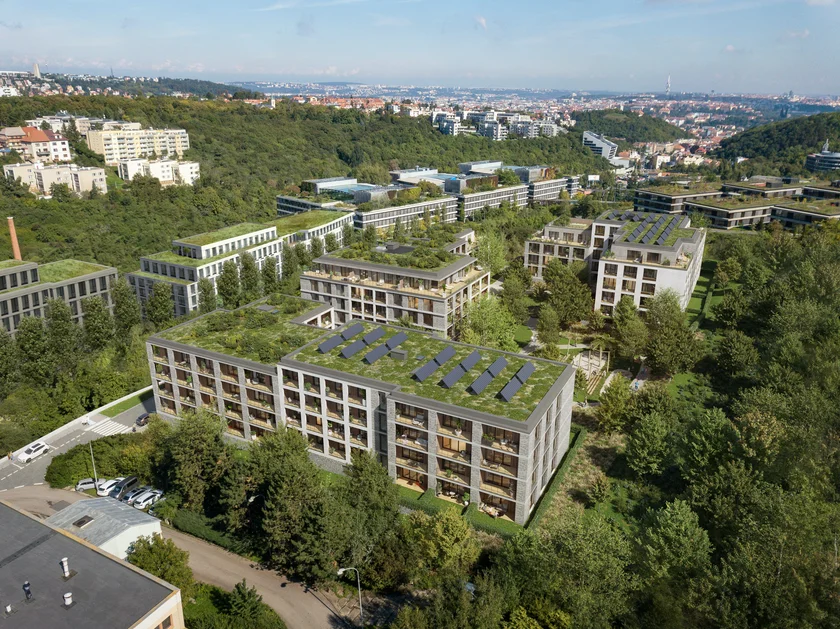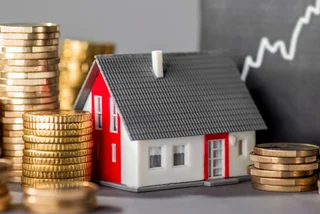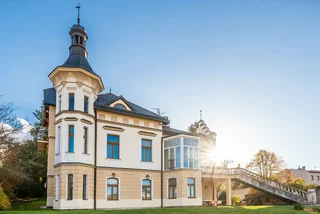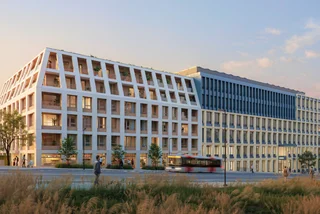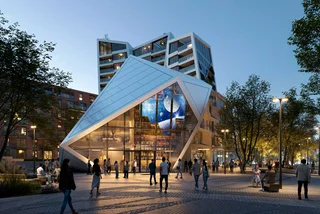Residential developer Skanska’s new Radlický Dřevák project will include the largest wooden residential building in the Czech Republic to date. It will arise on a brownfield site in Radlická Street in Prague 5. With almost 80 apartments, the first modern wooden apartment building in the Czech Republic will have a significant carbon footprint reduction and faster construction time compared to conventional projects.
Leading Czech studio Jakub Cígler Architekti is behind the design that follows an international boom in wooden construction. The pilot project’s aim is to show that wood can be successfully used in residential construction under Czech conditions and to verify its future potential for saving time and helping the environment. Skanska subsequently plans to use wood in the construction of a commercial building in Radlice.
In the long term, Skanska seeks to reach carbon neutrality by 2045 via the use of innovative materials and technologies. Wood is one possible tool for achieving more sustainable construction. The construction industry is responsible for 40 percent of global energy-related carbon emissions. On the other hand, wood stores carbon dioxide throughout its lifetime and can help the industry reduce emissions in the future.
Wood is also more efficient from the point of view of the circular economy. A house made of solid wood has a very long service life. When the house is no longer needed, it can be more sustainably demolished and recycled. At the same time, construction debris in the Czech Republic now makes up roughly 45 percent of total waste production, and only about 15 percent is recycled annually.
Skanska plans to build wooden residential building as part of a Radlický Dřevák single-phase project with a total number of 177 housing units. In addition to the wooden structure, the project also includes two other buildings made of conventional materials.
The four-story wooden building with almost 80 apartments uses wooden cross-laminated timber (CLT) in all above-ground floors and is built on a monolithic reinforced concrete foundation. Construction could begin as early as 2024. The project will embody low energy consumption, modern living, and healthy construction.
“Within one project, we have a unique opportunity to compare two different construction technologies, not only in terms of construction speed and construction management but above all in terms of carbon footprint reduction. We assume that we will verify here that in the future wood can replace a significant part of conventional materials that put a greater burden on the environment,” Skanska Residential CEO Petr Michálek said.
Skanska plans to use CLT for the supporting structure of the building as well as for visible material for selected interior partitions and equipment for the public space. In total, 1,600 cubic meters of wood will replace almost half of the total volume of concrete needed for the construction of the building using the conventional method.
As a result, the wooden house will ensure a lower carbon footprint of up to 560 tons of CO2, or 28 percent less compared to conventional construction. Over its lifetime, it will store an additional 1,400 tons of CO2 in the wood, roughly equivalent to the emissions produced by 345 gasoline-powered passenger cars per year.
CLT uses wooden boards that are joined together in a pattern that increases strength and minimizes material loss. Effective use of CLT panels can speed up the construction process by up to a quarter of the standard time. It also has aesthetic, psychological, and health benefits. It stabilizes the climate in a room and provides better thermal insulation. It also creates a feeling of a cozy and warm interior.
“With CLT it is possible to build up to 20 floors. Abroad, wood is increasingly being used in construction, but in this country, strict fire standards allow only four floors and a maximum height of 12 meters,” Skanska project manager Pavel Tomek said.
“At the same time, from the point of view of fire safety, buildings made of CLT panels are just as safe as ones made using the traditional construction method. We therefore believe that there will be changes in Czech legislation that will allow us to use wood more widely in the future," Tomek said.
Jakub Cigler, founder of the studio Jakub Cigler Architekti, said that using timber instead of concrete or steel is one of many ways to be more sustainable. “But the responsible choice of construction material is far from the only thing a project should include today. We need to look for ways to reduce energy consumption in the building, and water management inside and outside the building is also a principle that today's project must find a more economical answer for,” Cigler said.
“In doing so, all of these aspects contribute to both a greener and more energy-efficient outcome. But they also contribute in parallel to a more economical result,” Cigler added.
Radlický Dřevák is designed according to the strict requirements of the BREEAM international environmental certification and also aims for the highest A category in the domestic PENB certification for low energy usage. Compared to a standard reference building, it is up to 40 percent more economical.
The thoroughly insulated building envelope will also include triple glazing, and compared to the reference building will have a roughly 20 percent better heat transfer coefficient. In summer, together with the use of exterior blinds, the windows ensure a natural temperature reduction in apartments by 5 degrees to 7 degrees Celsius.
A central recuperation unit will contribute to a reduction in heating and cooling energy. This ensures fresh air in the rooms. Thanks to a heat exchanger, up to 80 percent of heat loss through ventilation can be prevented.
A system for managing recycled gray water will be installed in all the project’s buildings. This will reduce the consumption of drinking water by up to a quarter. Heat from the gray water will be used for preheating domestic hot water. This combined with energy from photothermal panels will reduce the consumption of natural gas for preheating water by up to half.
Retained rainwater from tanks with a total volume of 135,000 liters will be used to water the greenery in the common areas of the complex. Green roofs on buildings will capture a considerable amount of rainfall and will contribute to reducing the cost of cooling the building and at the same time improve the local microclimate.
The emphasis on building a local community is also important. In the wooden apartment building, there will be space for local residents’ needs, such as a children’s group to look after the little ones or a corner for do-it-yourselfers. At the same time, the elevated location of the plot offers a beautiful view of Prague, and in the calm courtyard, wood can be used, for example, in the form of a gazebo for meetings, a children's swing for playing, or prismatic stairs or benches for rest and work.
Skanska Residential has been active in the Czech residential construction market since 1997. To date, it has created over 9,000 new homes where over 23,000 people live in Prague. Skanska considers respect for natural resources to be essential and regularly brings innovative technologies to the market.
It was the first in the Czech Republic to undertake the design and construction of sustainable housing according to the international BREEAM certification, which aims to support the health of residents, the neighborhood, and the entire planet. It gradually became the market leader in the construction of economical residential buildings that contribute to saving water, energy, and carbon footprint.












 Reading time: 6 minutes
Reading time: 6 minutes 